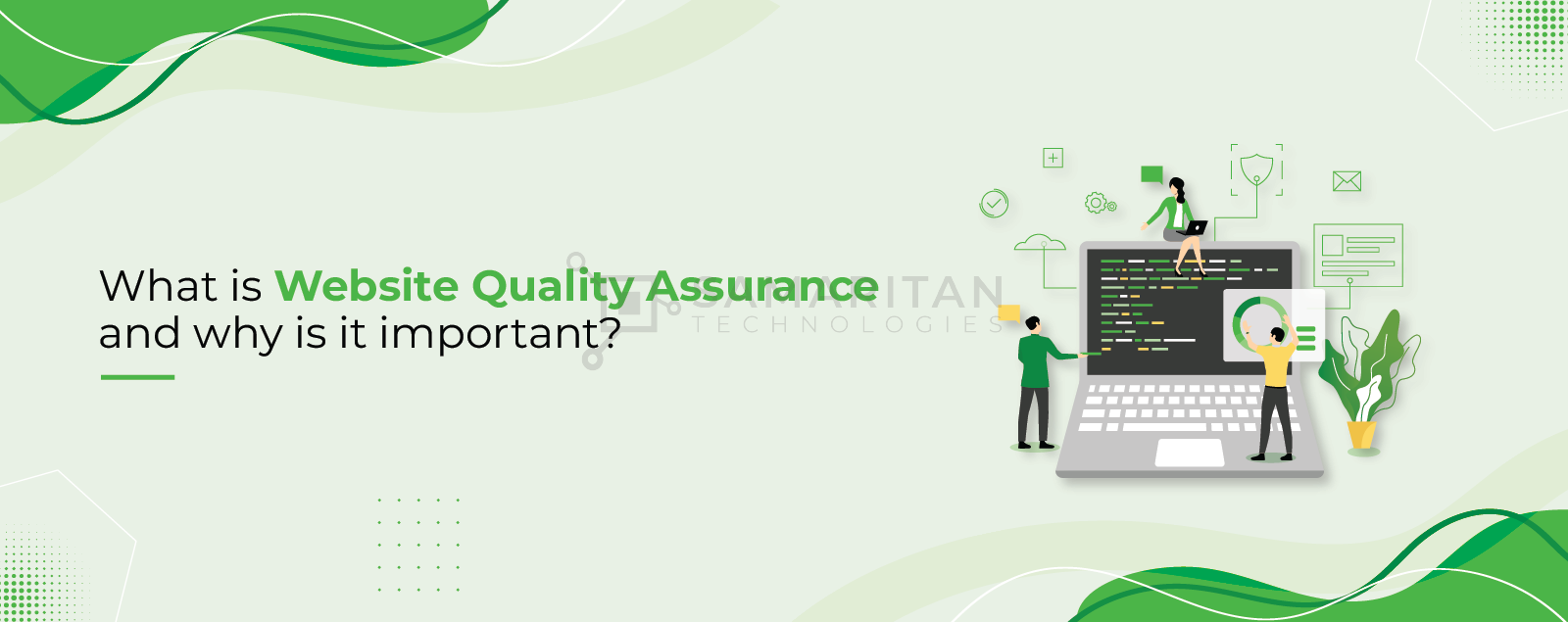Your website is the virtual showroom for your company in the always changing digital world. It makes a first impression on prospective clients and helps them form an opinion of your brand. A badly designed website can drive away visitors fast, leaving them dissatisfied and reluctant to come again. It’s important to start a best quality assurance (QA) hunt to make sure your website not only works perfectly but also offers an amazing user experience (UX) in order to prevent this destiny.
We’ll reveal the techniques for spotting and eliminating usability problems so that you may create a website that fluidly directs visitors to the actions you want them to do. Get ready to go on a digital transformation journey where your website’s full potential may be unlocked via quality assurance.
What is website quality assurance (QA) and why is it important?
The process of assessing a website’s performance, security, usability, and functionality to make sure it satisfies user expectations and intended requirements is known as website quality assurance, or QA. Performance testing, automated testing, and manual testing are just a few of the many tasks involved. Any website that wants to succeed must invest in website quality assurance (QA), which helps to find and fix issues, enhance the website’s general functionality, and guarantee a satisfying user experience.

Which website QA testing methods are available?
Website quality assurance (QA) testing methods are essential for ensuring that a website functions as intended, delivers a positive user experience, and meets the expectations of target users.
Various testing methods can be employed to evaluate different aspects of a website, each with its own strengths and applications. Here’s a breakdown of some widely used website QA testing methods:
Functional Testing:
Functional testing focuses on verifying that the website’s features and functions operate as intended. It ensures that the website behaves correctly according to its specifications, covering aspects like user input, data processing, and output generation. Functional testing methods include:
Black-box testing: Testers execute test cases without prior knowledge of the website’s internal structure, focusing on the user’s perspective.
White-box testing: Testers leverage their understanding of the website’s code and design to create test cases that cover specific functionalities and edge cases.
Usability Testing:
Usability testing evaluates how easy it is for users to interact with the website, identify information, and complete tasks. It assesses the user experience (UX) from a human perspective, identifying areas that may cause confusion, frustration, or hinder task completion. Usability testing methods include:
Moderated usability testing: A moderator guides a small group of users through the website, observing their interactions and recording their feedback.
Unmoderated usability testing: Users interact with the website independently, providing their thoughts and feedback through surveys or screen recordings.
Performance Testing:
Performance testing assesses the website’s responsiveness, loading speed, and ability to handle different usage scenarios. It evaluates how well the website can handle varying traffic volumes, ensuring it remains stable and responsive under peak load conditions. Performance testing methods include:
Load testing: Simulates a large number of users accessing the website simultaneously to evaluate its capacity and scalability.
Stress testing: Pushes the website beyond its expected load to identify performance bottlenecks and breaking points.
Accessibility Testing:
Accessibility testing ensures that the website is accessible to users with disabilities, including those with visual, auditory, motor, or cognitive impairments. It verifies that the website complies with accessibility guidelines and standards, enabling all users to navigate and interact with the site effectively. Accessibility testing methods include:
Automated testing: Utilizes automated tools to scan the website for accessibility issues, such as missing alt text for images or incompatible color contrast.
Manual testing: Involves human testers with disabilities evaluating the website from their perspective, identifying any usability barriers for their specific needs.
Security Testing:
Security testing aims to identify and address potential vulnerabilities in the website that could be exploited for malicious purposes. It seeks to prevent unauthorized access, data breaches, and other security threats. Security testing methods include:
Vulnerability scanning: Utilizes automated tools to scan the website for known security weaknesses and vulnerabilities.
Penetration testing: Simulates attacks by ethical hackers to identify security flaws and test the effectiveness of security measures.
Compatibility Testing:
Compatibility testing ensures that the website functions correctly across different browsers, devices, and operating systems. It verifies that the website renders consistently and provides an optimal user experience regardless of the user’s environment. Compatibility testing methods include:
Browser compatibility testing: Tests the website’s compatibility with various web browsers, including major releases and older versions.
Device compatibility testing: Tests the website’s responsiveness and usability on different devices, such as smartphones, tablets, and desktops.
Cross-Platform Testing:
Cross-platform testing ensures that the website functions seamlessly across different platforms, including web applications, mobile apps, and native apps. It verifies that the user experience is consistent and the website’s features are accessible across different platforms. Cross-platform testing methods include:
Emulator testing: Utilizes software that simulates different devices and environments to test the website’s functionality on specific platforms.
Real device testing: Tests the website on actual devices running different operating systems and configurations.

Which is a cost-effective way to perform website QA?
Performing website QA cost-effectively requires a strategic approach that balances thorough testing with resource optimization. Here are some strategies to consider:
Leverage Open-Source QA Tools:
Utilize freely available QA tools like Selenium, Cypress, and JMeter to reduce the cost of licensing and maintenance. These tools offer a wide range of capabilities for functional, performance, and usability testing.
Adopt Agile QA Practices:
Integrate QA into the development process using agile methodologies like Scrum or Kanban. This approach allows for continuous testing throughout the development cycle, reducing the need for extensive testing at the end of the project.
Automate Repetitive QA Tasks:
Automate repetitive testing tasks using scripts and tools to free up QA testers for more complex and exploratory testing. This can significantly enhance efficiency and reduce the overall cost of QA.
Utilize Cloud-Based QA Solutions:
Consider cloud-based QA platforms that offer on-demand testing resources and eliminate the need for in-house infrastructure. This can be particularly cost-effective for smaller teams or projects with fluctuating testing needs.
Prioritize Critical Testing Areas:
Focus on testing the most critical aspects of the website that directly impact user experience and business objectives. This prioritization ensures that resources are allocated effectively and that the most important areas receive the necessary attention.
Involve Developers in QA:
Encourage developers to participate in testing activities to foster a culture of shared responsibility for quality. This collaboration can identify issues early on and reduce the need for extensive rework later in the development cycle.
Utilize User Feedback:
Actively gather and analyze user feedback to identify areas for improvement and prioritize testing accordingly. This user-centric approach ensures that QA efforts are aligned with real user needs and expectations.
Invest in Continuous Integration (CI)/Continuous Delivery (CD):
Implement a CI/CD pipeline that automates the testing process and integrates it into the development workflow. This continuous testing ensures that new code is tested and validated before deployment, reducing the risk of introducing bugs and improving overall quality.
